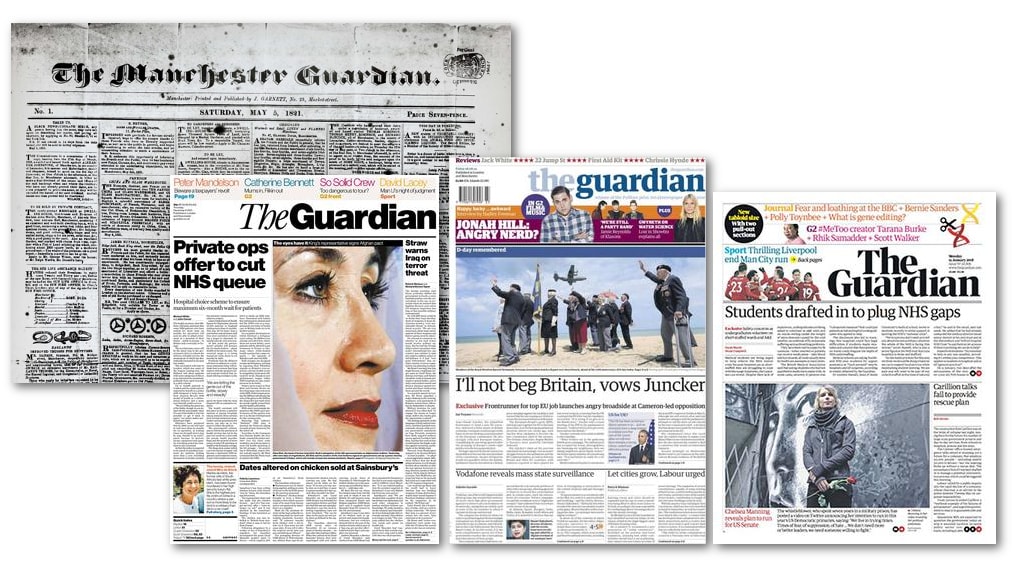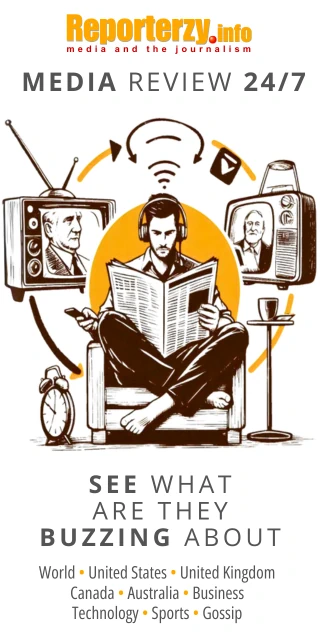 fot. Guardian/Wikimedia
fot. Guardian/WikimediaConsider the origins of this newspaper. Chaos gave birth to The Guardian. Think about the Peterloo Massacre in 1819. Cavalry charged into a peaceful public meeting in Manchester. Businessman John Edward Taylor was right there. He wrote the powerful truth about the events he witnessed.
Taylor sent his passionate account to The Times. That London paper printed his story, but editors stripped away all the author`s emotion. That moment proved critical for Taylor. He realized he absolutely needed his own, fiercely independent voice.
Taylor belonged to the Little Circle, a group of nonconformist liberals. These reformers supported parliamentary change and worker protests. Taylor and his allies decided to take action. They pooled their money together. They raised 1,050 pounds to launch their vision. That is exactly how The Manchester Guardian began its long journey.
Why the early Guardian caused a sensation
The first issue appeared on Saturday, May 5, 1821. What filled the first page of the new paper? Not hard news, but advertisements across four columns. Ads were the primary source of income for every paper at the time. But the true scandal lay hidden deeper within the pages.
Taylor included shocking statistical tables about local schools. This proved a true sensation for the early 19th century. The published data revealed official education figures were drastically understated. This proved that children were largely working during the week. They attended school only on Sundays. The data also showed the church profited from this hidden system. The Manchester Guardian immediately announced it would fight this state of affairs.
Taylor publicly stated his commitment from the start. He vowed to enforce the principles of civil and religious freedom. He also promised to support the cause of reform. The publisher further declared the paper would disseminate fair principles of political economy. It was clearly a declaration of war against injustice.
The newspaper initially cost seven pence. This amounted to a huge sum for the time. Four pence was a mandatory stamp duty. Since the paper printed outside London, it only appeared once a week. Rules eventually changed, of course. After additional costs were abolished in 1836, the paper printed twice weekly. When all taxes were finally eliminated in 1855, The Guardian became a daily newspaper.
A war correspondent sends news by balloon
The weekly quickly gained influence outside London. In the first years, circulation was 1,000 copies weekly. This figure grew to 2,000 copies by 1823. By 1825, circulation reached 3,000 copies.
The newspaper reached other major cities too. It appeared in Glasgow, Hull, and Exeter. Many readers accessed the title in popular gathering spots, like public cafés. The Manchester Guardian soon became the third most popular paper printed outside London. When John Edward Taylor died in 1844, his cousin, Russell Scott, purchased the paper. Scott promised to sell it to Taylor’s sons once they were ready.
The mid-19th century saw some truly unique journalism. Consider the case of G.T. Robinson. He served as the paper`s war correspondent during the Franco-Prussian War. In September 1870, Robinson found himself stuck in the besieged city of Metz. Telephones and the internet simply did not exist yet. So how did he manage to send his news out of the blockade?
Robinson pioneered the use of "papillons de Metz" (moths of Metz). These were small balloons used to float messages beyond enemy lines. Robinson knew it was a "crazy, chimeral, and even funny idea". Yet, the messages often reached their intended destinations. The paper detailed this amazing concept in the 1870 article Our Balloons. The journalist even earned the title of great aerostatic chief.
The immense influence of C.P. Scott
In 1872, a new leader took charge. Edward Taylor hired his young cousin, Charles Prestwich Scott. Scott, fresh out of Oxford, immediately impressed the owner. In January 1872, C P Scott took the editor`s chair at just 25 years old. He held that powerful position for an incredible 57 years. This long tenure arguably makes him the most successful chief in the paper’s entire history.
Scott had a crystal-clear ambition. He wanted his paper to become the best "news mine". He also actively pursued political influence. Scott focused deeply on social issues in his paper. These included housing problems for the lowest classes. He also printed investigative reports on the health of the working class.
Scott fundamentally revolutionized the paper’s visual appeal. He quickly realized printing quality mattered greatly. In March 1886, he introduced the paper’s first engravings. These were not simple ornaments like previous drawings. They were portraits, maps, and drawings of buildings. Though readers initially reacted critically, they soon adapted to the change. By 1899, The Manchester Guardian achieved national and international reach.
When the owner died in 1905, his will prioritized Scott`s purchase of the paper. After two years of complex haggling, Scott finally bought it in 1907 for 240,000 pounds. He promptly quit politics to focus solely on the newspaper. He also hired the paper’s first full-time staff photographer, Herbert Walter Doughty, in 1908. Doughty brought innovations like motion scenes filmed with a self-built camera.
The manifesto that became sacred
Scott celebrated the paper’s centennial in 1921. He penned a definitive essay titled A Hundred Years. This text is still repeated like a mantra by journalists globally. It became the true manifesto of independent journalism worldwide. What was his famous decree? “Comment is free, but facts are sacred,” he wrote. He strongly insisted that a paper`s most important virtue is its independence. He believed the paper must always possess its own soul.
Scott stepped down in July 1929. His son, Edward (Ted) Scott, took over as editor. Scott Sr. died three years later, on January 1, 1932. Tragically, just three months after his father`s death, Ted Scott died in a sailing accident. This left his other son, John Russell Scott, as the sole heir and owner.
John Scott knew competition was fierce. He also recognized that prevailing inheritance law seriously threatened the paper’s future. To protect his family’s principles and the paper`s journalistic freedom, he devised a pioneering solution. He created the Scott Trust.
This momentous act took effect in June 1936. John Scott relinquished all financial interests in the paper. He entrusted both papers, valued at a million pounds, to this group of trustees. This incredible decision created a unique ownership structure. The trust guarantees the paper operates with honesty, integrity, and courage. Its primary goal remains unchanged. The trust must ensure the paper’s perpetuity and protect its independence at all costs.
Wartime challenges and the Grauniad nickname
World War II brought huge, immediate challenges. The paper’s office in Cross Street, Manchester, was a prime bombing target. Employees often had to extinguish fires. A major fire occurred on December 22, 1940. Despite severe paper shortages and strict censorship, the paper kept publishing.
Sometimes, authorities seized whole editions. For example, 5,500 copies of the London edition were confiscated in 1940. The censor feared a photo of bombed Kew might lower public morale. Despite the hardships, the demand for news remained massive. By 1941, circulation hit 60,000 copies. They sold out immediately, even without discounts.
Alfred Powell Wadsworth took over as editor in 1944. He notably published a notice on May 9, 1945, announcing VICTORY HOLIDAYS. The paper did not publish the next day because everyone was celebrating the end of the war.
The post-war era brought the first major aesthetic change. For over 130 years, the front page had been reserved solely for advertisements. Consider this absurdity: In February 1952, when King George VI died, readers learned about a baseball game postponement due to the death. The extensive news about the King was only on page four.
Finally, the paper modernized its appearance. On September 29, 1952, the paper dropped "The" and moved the freshest news to the front page. This change was well-received by readers. Sales increased significantly. In 1952, the paper’s circulation reached 130,000 copies.
In 1959, the paper simplified its name again. It officially became The Guardian. The next significant move came in 1964. The entire editorial team relocated from Manchester to London. This move created a major headache for production. Typographical errors increased due to new printing methods. The satirical magazine Private Eye seized on this flaw. They quickly nicknamed the paper the "Grauniad" (a transposition of letters). Even after the paper fixed the printing issues, the playful name unfortunately stuck.
The format revolution begins with G2
The move to London caused significant financial troubles for the paper. Sales dropped dramatically. Advertising revenue proved insufficient. The Guardian survived only by relying on the profits from the Manchester Evening News.
Editor Alastair Hetherington introduced independent commentary sections and supplements. Peter Preston took over in 1975. He faced serious internal issues. Journalists were the lowest paid in the entire media market. Quality suffered seriously as a result. Preston and advertising director Gerry Taylor worked aggressively to turn things around.
Preston had a crucial insight about the readership. The paper was highly popular among university students and colleges. This recognition led to the creation of the Education Guardian advertising section. That idea was a massive success. They later added Media Guardian and Society Tomorrow sections. Preston also targeted women readers by adding the Guardian Women supplement.
The rival The Times temporarily ceased printing between 1978 and 1979 due to internal conflicts. This provided a massive opportunity for The Guardian. The Guardian`s sales surged during this time. The paper entered the 1980s in a much better financial position.
Preston later introduced a ground-breaking concept in 1992. He launched a lighter, daily tabloid supplement called Guardian 2 (G2). This smaller, new format professionally tackled culture, arts, and lighter news, but with wit. G2 was an immediate hit with readers. Readers loved taking the smaller format on the metro or bus. This innovation forced the "core" Guardian to sharpen its primary journalism. Alan Rusbridgerg, the editor of G2, eventually became the editor-in-chief in 1995.
Digital transformation and the Pulitzer
Rusbridgerg inherited the "Libel Years". The paper seemed constantly tied up in court proceedings. Politicians, banks, and corporations continually sued The Guardian. However, the paper won or dismissed the majority of the cases.
While defending the paper in court, the digital transformation was accelerating. The paper launched its first content online in February 1996. By January 1999, all thematic sites were unified as Guardian Unlimited. By March 2001, the site had over 2.4 million users. This made it the most popular British newspaper website at the time.
Rusbridgerg launched another huge format revolution in 2005. He changed the format to the European Berliner. This move proved incredibly expensive. It cost nearly 80 million pounds for new printing presses. It made The Guardian the first British paper printed in full color on every single page. Sales increased as a result. In December 2005, the average daily sale was 380,693 copies.
The paper continued to break massive stories. In 2011, they exposed the phone hacking scandal of Milly Dowler. Most significantly, in 2014, The Guardian won the Pulitzer Prize. They won "for public service" for publishing documents revealed by Edward Snowden. This work exposed the massive scale of surveillance by the US NSA.
Despite massive digital success, print circulation dropped sharply. By December 2016, average daily circulation was only 161,091 copies. However, online readership soared exponentially. By 2014, The Guardian reached nearly 100 million readers via the internet.
In 2015, Katharine Viner became the first woman editor-in-chief. Viner oversaw the final major format shift. In 2018, The Guardian became a tabloid format. This change, while initially controversial, significantly reduced printing costs. The structure created by John Edward Taylor and the Scott family endures. That decision to forgo profits and create the Scott Trust ranks high among great philanthropic acts. This unique structure ensures two crucial goals. It guarantees the perpetuity of The Guardian and fiercely protects its independence against all comers. For 187 years, The Guardian has successfully stood on guard.
The Guardian timeline
- May 5, 1821 - the first issue of the Manchester Guardian is published. It is a weekly.
- 1836 - a fee reduction allows printing twice a week: on Wednesday and Saturday
- 1855 - tax removal allows the paper to be published Monday through Friday
- 1872 - Charles Prestwich Scott becomes editor-in-chief for 57 years
- 1886 - first engravings
- 1907 - CP Scott becomes the owner of the paper
- 1908 - first professional photographs by Walter Doughty
- July 4, 1919 - first issue of the Guardian Weekly for the international readership
- 1921 - the essay A Hundred Years, written by Scott for the paper’s centenary, is recognized as a blueprint for independent journalism
- 1929 - first crossword puzzle
- 1936 - the Scott Trust is established, a trust company safeguarding funds and principles set by the founders
- 1948 - reorganization of the Scott Trust
- September 29, 1952 - news appears on the front page for the first time, previously it had only ads
- August 24, 1959 - name changes from Manchester Guardian to The Guardian
- 1961 - the paper is printed in London
- 1964 - editorial office moves to London
- 1969 - new masthead
- 1976 - relocation to 119 Farringdon Road
- 1983 - the Sarah Tisdall case, the paper is taken to court
- 1988 - major transformation of the newspaper
- October 12, 1992 - launch of Guardian 2 (G2)
- January 18, 1995 - first color photograph
- February 1996 - launch of online front page Eurosoccer.com, dedicated to Euro 1996
- 1999 - launch of the website guardianunlimited.co.uk
- March 2004 - digital edition of the paper launched, allowing access to articles, photos, and ads that appeared in print
- July 2004 - launch of the interactive website for the Soulmates dating service
- 2005 - format change to Berliner, full-color newspaper
- 2009 - launch of Open Platform, allowing free access to full article content and stats and enabling the creation of custom applications
- 2011 - apps for iPhone and iPod Touch, for Android and Windows phones, and a Facebook page
- January 2012 - another rebranding
- 2014 - Pulitzer Prize for “public service” (article on NSA surveillance)
- October 2014 - launch of the newspaper’s US website, followed by the Australian site in November
- January 15, 2018 - Guardian switches to tabloid format
sources:
- https://www.theguardian.com/news/datablog/2011/sep/26/data-journalism-guardian
- https://en.wikipedia.org/wiki/The_Guardian
- http://www.wikiwand.com/en/The_Guardian#/Publication_history
- http://spartacus-educational.com/PRtaylor.htm
- https://www.theguardian.com/commentisfree/2008/jul/07/poetry
- https://pl.wikipedia.org/wiki/Jeremiah_Garnett
- https://en.wikisource.org/wiki/Taylor,_John_Edward_(DNB12)
- https://www.theguardian.com/gnmeducationcentre/archive-educational-resource-september-2012
- https://web.archive.org/web/20080704193638/http://www.adam-matthew-publications.co.uk/digital_guides/journalism_and_politics_series_one/publishers%20note.aspx
- https://www.theguardian.com/gnm-archive/walter-doughty
- https://www.theguardian.com/gnm-archive/collection-in-focus-cp-scott
- https://www.theguardian.com/sustainability/cp-scott-centenary-essay
- https://www.theguardian.com/news/2016/dec/20/guardian-weekly-newspaper-history-editors-global-readers
- https://www.theguardian.com/the-scott-trust/2015/jul/26/the-scott-trust
- http://guardian.calmview.eu/CalmView/Record.aspx?src=CalmView.Catalog&id=WPC
- https://en.wikipedia.org/wiki/Frederick_Augustus_Voigt
- https://www.theguardian.com/gnm-archive/2015/jan/02/foreign-news-coverage-in-the-1930s-teaching-resource-from-the-gnm-archive-january-2014
- https://www.theguardian.com/gnmeducationcentre/paper-rationing-second-world-war-teaching-resource-gnm-archive
- http://oxfordindex.oup.com/view/10.1093/oi/authority.20110803120314132#show%20more%20content
- https://www.theguardian.com/theguardian/from-the-archive-blog/2012/sep/28/guardian-front-page-news-1952
- https://en.wikipedia.org/wiki/Alastair_Hetherington
- https://www.theguardian.com/media/2018/jan/07/peter-preston-obituary
- https://www.theguardian.com/media/2015/apr/22/gerry-taylor
- https://www.theguardian.com/global/2018/jan/08/peter-preston-guardian-tabloid-revolution-g2
- https://www.theguardian.com/media/2012/oct/16/unleashing-g2-2-years-ago
- https://www.theguardian.com/commentisfree/2018/jul/07/peter-preston-guardian-hero-daily-mail-paul-dacre
- https://www.theguardian.com/gnmeducationcentre/archive-educational-resource-february
- https://www.theguardian.com/media/video/2014/apr/17/guardian-road-100-million-unique-browsers-video
COMMERCIAL BREAK
New articles in section History of the media
The History of The New York Times. All the news that's fit to print
Małgorzata Dwornik
In the heart of 19th-century New York, when news from across the world traveled via telegraph and the newspaper was the voice of public opinion, two ambitious journalists created a modest four-page daily that would eventually become a legend.
FORTUNE. The story of the most exclusive business magazine
Małgorzata Dwornik
Half of the pages in the pilot issue were left blank. Only one printing house in the country could meet the magazine’s quality standards. They coined the terms "business sociology" and "hedge fund". They created the world’s most prestigious company ranking. This is the story of Fortune.
History of Le Soir. A Belgian daily once free for ground floor readers
Małgorzata Dwornik
It started with an unusual sales policy and articles written personally by the king. This is where the comic hero Tintin made his name. The "fake edition" from the II World War went down in history. "Le Soir" more than once found itself targeted by authorities, censors, and even... terrorists and hackers.
See articles on a similar topic:
Bravo. History of a sixty-year-old magazine for the youth
Małgorzata Dwornik
The idea of creating a newspaper for the "crazy kids" of the 1950s and 60s turned out to be a bullseye. Music and film stars, important topics and taboo-breaking pieces that flirted with scandal - that was the recipe for success. Circulations in the millions are now a thing of the past, but BRAVO still manages to reach teenagers. It’s building its presence on social media.
La Stampa. The history of the oldest newspaper in Italy
Małgorzata Dwornik
It was founded in Turin as Gazzetta Piemontese. Over more than 150 years, it built its position as an iconic title not only in the Italian press market. It survived attacks from fascists, terrorists, and even Muammar Gaddafi. Even in the era of the internet, it continues to perform exceptionally well.
History of Die Welt. A newspaper with a dream of German unity
Małgorzata Dwornik
On April 2, 1946, in Hamburg - or rather, among its ruins - the first German newspaper under the patronage of the British military authorities appeared. For years, the Die Welt editorial team proved that a strong, nationwide paper could be published outside the capital. When they finally relocated there, they blazed new trails - this time in the digital world.
Journal de Monaco. The history of the weekly that "brings Monaco closer"
Małgorzata Dwornik
In 1858, Carles de Lorbac established the weekly L’Eden to raise awareness of Monaco's issues, which a year later was renamedJournal de Monaco. Starting as a cultural weekly, it has undergone several changes but continues to be valued by the residents of this small country.






























